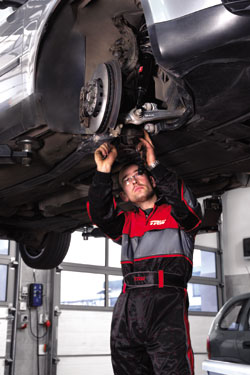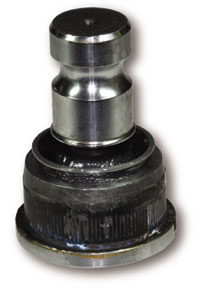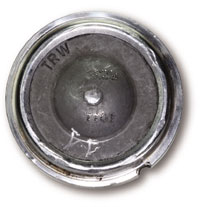
Ball joints connect the car’s suspension system to control arms and steering knuckles, allowing the suspension system to move while steering. The number and location of the components depend on the make, model and type of system used.
 Ball joints will deteriorate over time and eventually wear out. If a ball joint fails it will affect the handling of the vehicle; the wheel’s angle alters, reducing control and the vehicle could come to an abrupt stop, damaging the tyres in the process.
Ball joints will deteriorate over time and eventually wear out. If a ball joint fails it will affect the handling of the vehicle; the wheel’s angle alters, reducing control and the vehicle could come to an abrupt stop, damaging the tyres in the process.
The following symptoms could point to an unhealthy ball joint and ignoring these could put the driver and other road users at risk:
■ A clicking/snapping sound when the wheel is turned; eventually becoming a squeaking sound when the brake is applied.
■ A knocking noise coming from the front end of the car when driving over small bumps/humps.
■ Uneven tyre wear; usually the result of bad alignment (when the car pulls to one side).
Continuing to drive could damage internal parts, such as the tie rod. Because these parts work in conjunction, it’s recommended that you replace both at once.
Ball joint heath check
Sealed ball joints are lubricated at the source of manufacture, but standard ball joints must be kept lubricated. This can extend lifespan in older vehicles.
Generally speaking, standard ball joints will outlive the sealed type because eventually the seal fails, causing the joint to dry out and rust. A sealed ball joint can fail as early as 80,000 miles.
A good workman uses the right tools
When changing a ball joint, it is vital that the correct tools are used. TRW recommends that there are three ways to correctly remove and change a ball joint to make sure it isn’t canted (slanted or tilted):
1. Use a stand-alone hydraulic press to press gently, in one go, the correctly positioned ball joint into the track control arm.
2. Use a mobile hydraulic press.
3. Fit a new track control arm, equipped with bushes and ball joints.
After this, the car will need to be realigned, which requires specialist tools and knowledge.
HOW NOT TO DO IT
This image shows a damaged ball joint. This part has worked its way loose, and then been damaged by hitting against the track control arm. Additionally the spline isn’t visible and has filled with thread locker fluid (indicated by the blue colour). If properly repaired, the ribbing would be clearly visible.
 This shows how a ball joint has been damaged by using a hammer instead of a hydraulic press – a fast option, but not safe.
This shows how a ball joint has been damaged by using a hammer instead of a hydraulic press – a fast option, but not safe.

Again, a hammer has been used as each of the lines shows a hammer blow. Clearly the lines are not horizontal and this will widen the bore of the track control arm. This is on the end reducing the clamping force, which leads to loosening of ball joints.

There’s a wealth of technical information about ball joins available on TRW’s free, online technical resource website, ‘Tech Corner’. You can register here.









